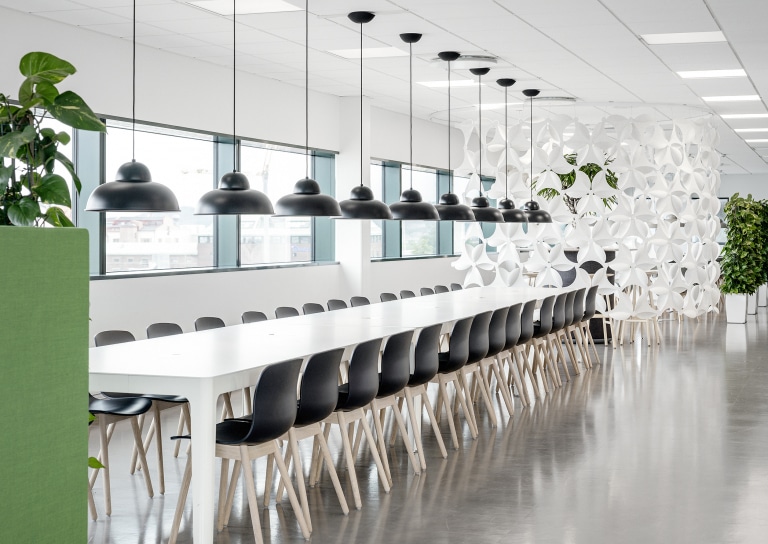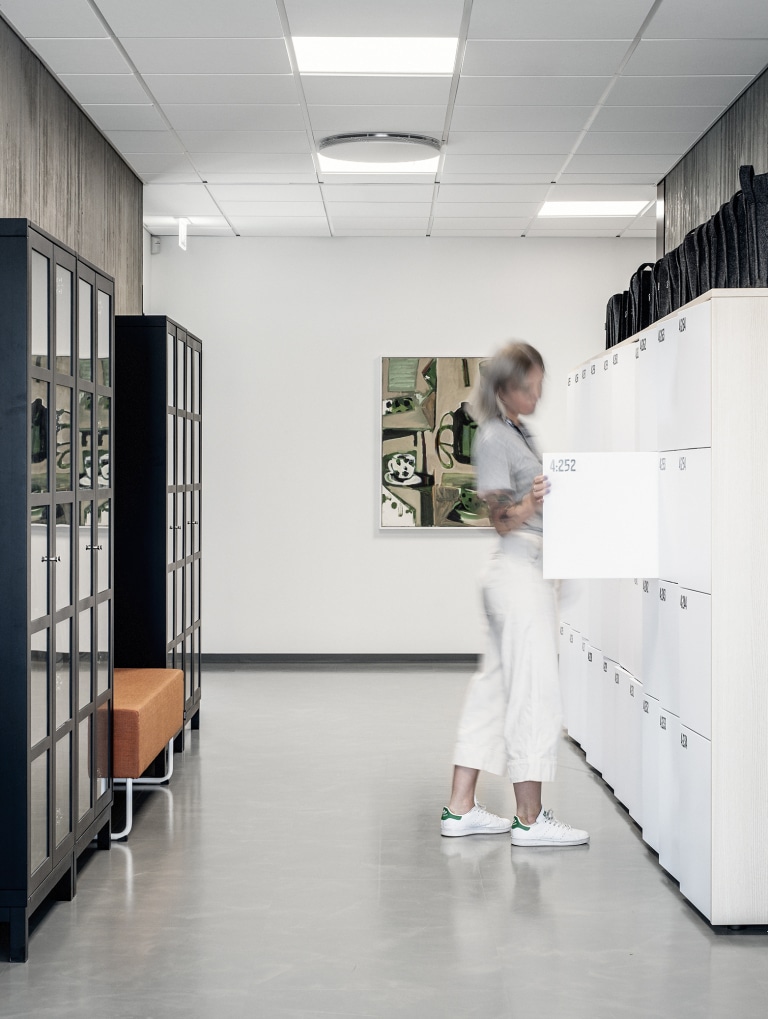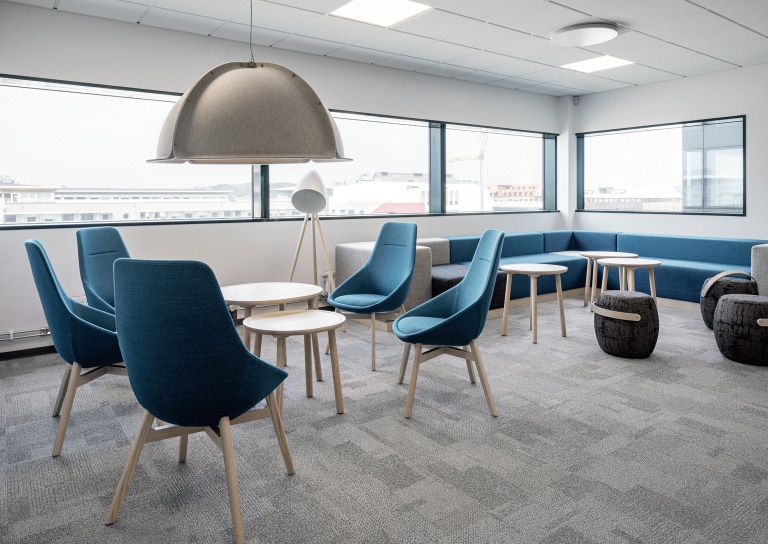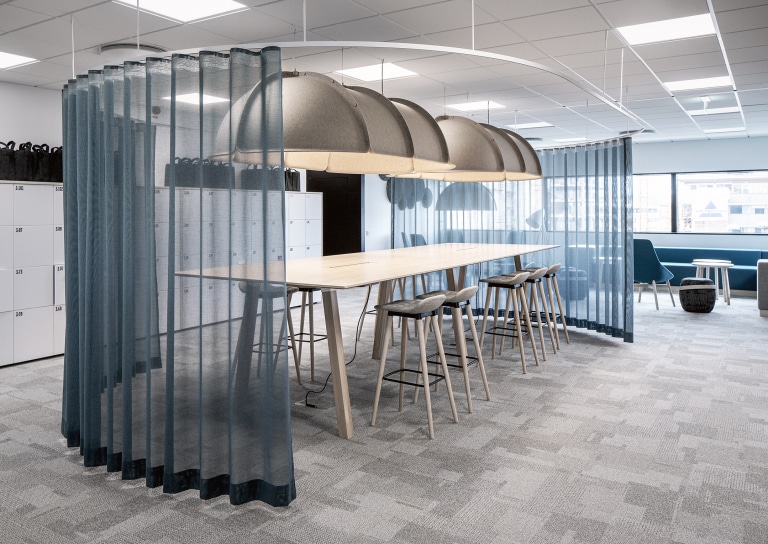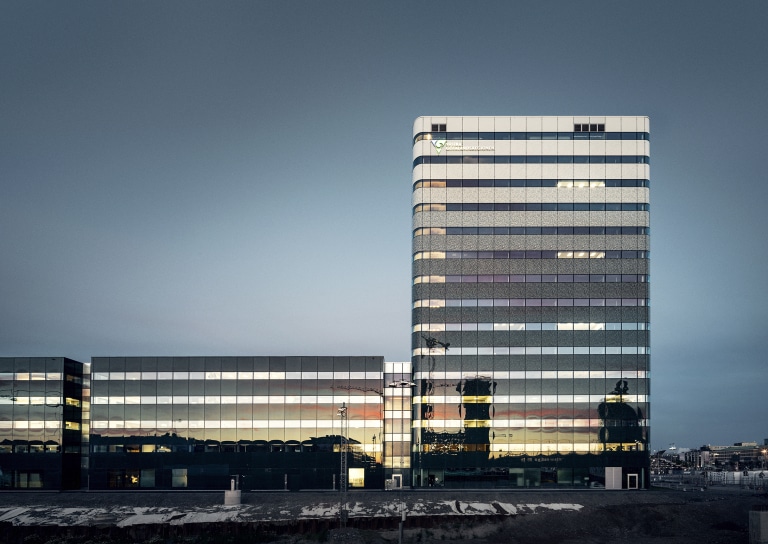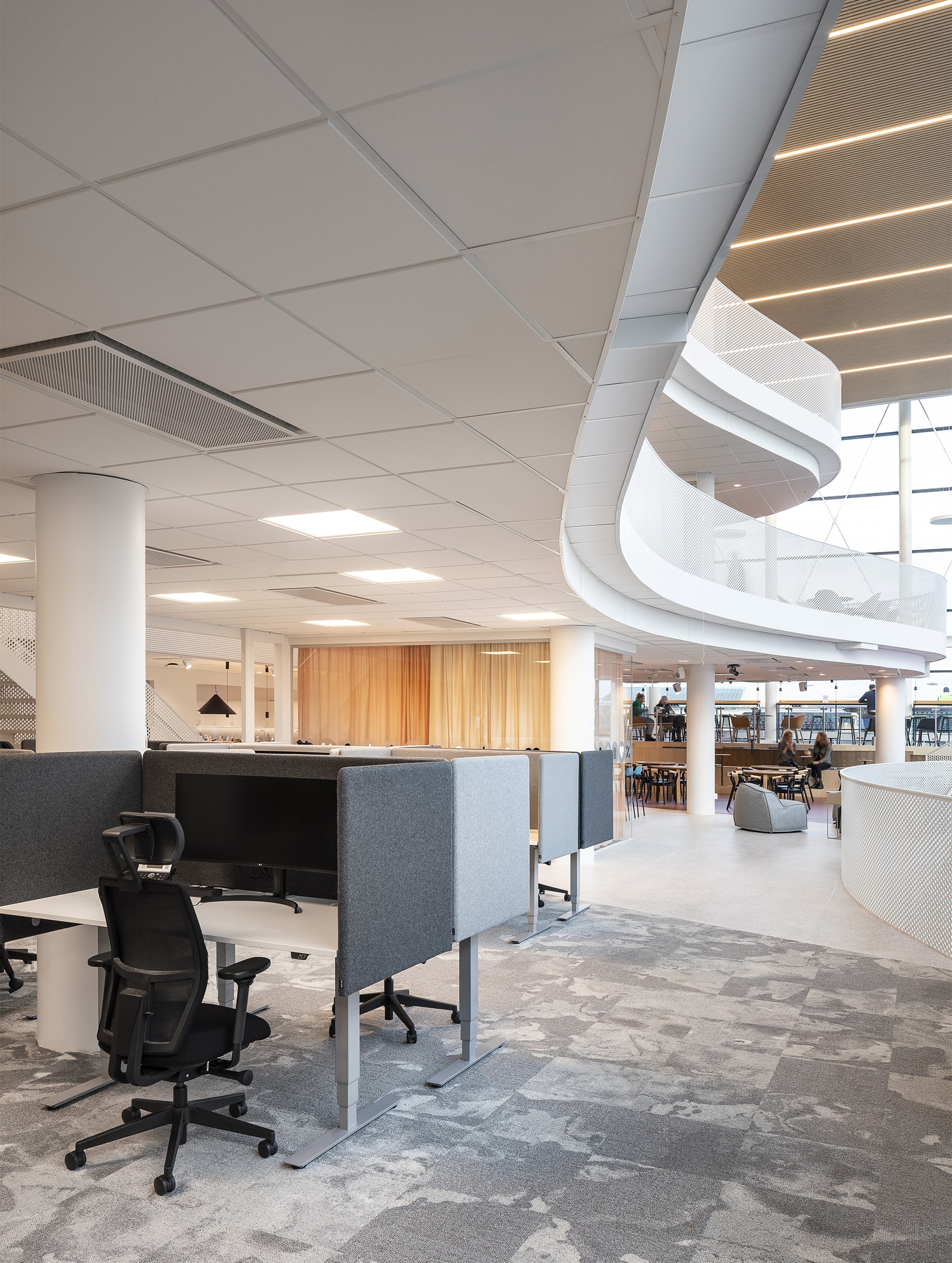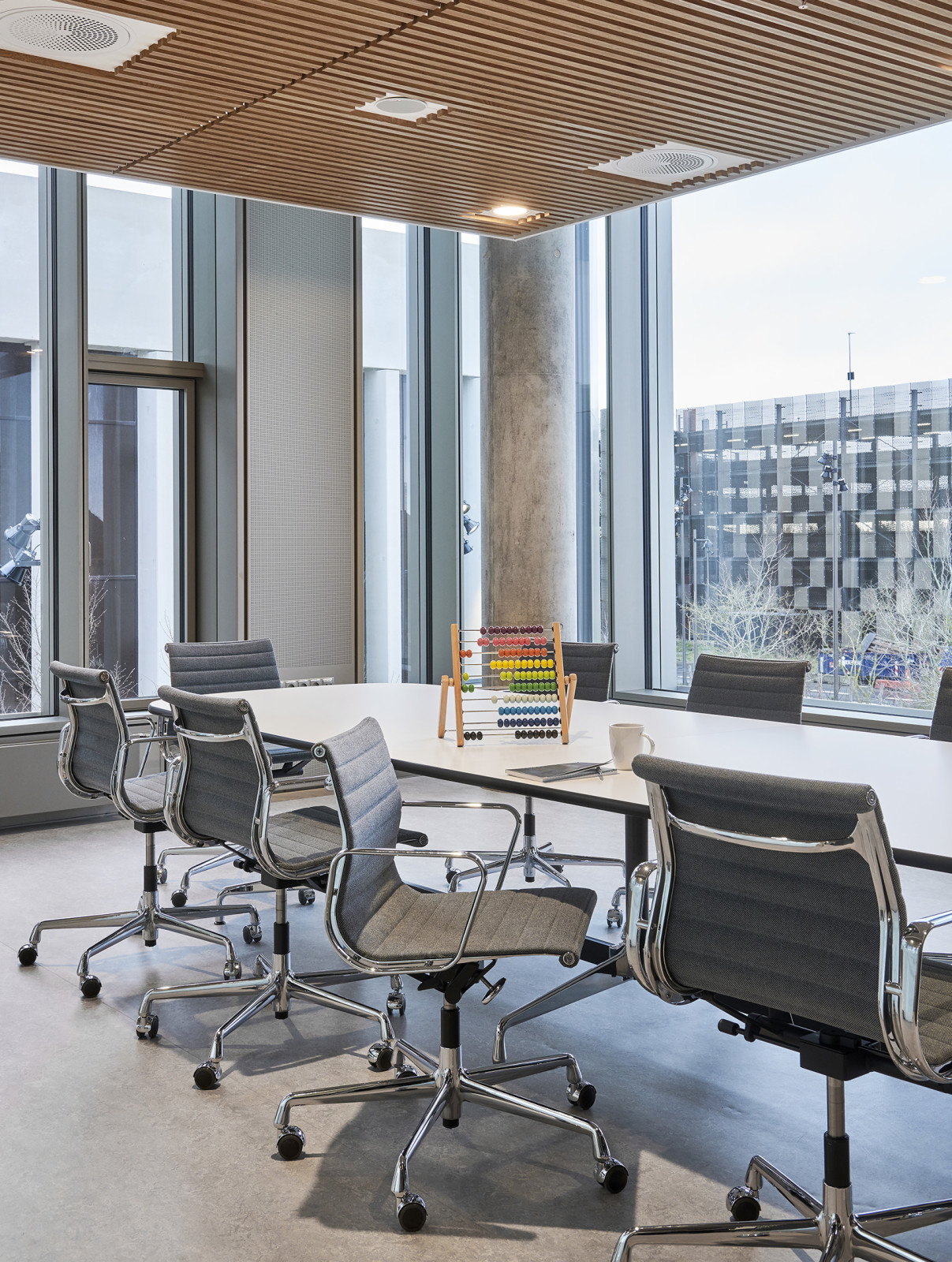Regionens Hus









1,500 employees from 15 administrative functions gathered under one roof in a building of 13,000 m2. Regionens hus in Gothenburg aims to promote increased interaction and spontaneous collaboration through co-location and an activity-based working method. The office reflects the region’s values, by being an attractive, modern workplace accessible to all.
A new 15-storey building of dark-green glass contrasts with the white exterior of the restored grand old station building in the foreground. The buildings differ and accentuate each other’s unique appearance in a distinct manner, creating a sympathetic mix of old and new.
The new Regionens hus has been designed by White Arkitekter and was inspired by the green landscape of Västergötland. The building is the first in a series of major projects intended to form a new city district between Gothenburg Central Station and the Götaälv river. Abako Arkitektkontor planned all furnishings for the project. The interior links up with the façade and reflects the nature of the region in the form of colours and watercourses.
Communication and wayfinding
Regionens hus will see 1,500 co-workers from 15 different functions co-located under one roof. An activity-based working method is to be implemented in this activity-adapted work environment. A streamlining process that benefits working methods, finances and the environment.
“We have done a lot of work with key ratios in order to ensure we make optimum use of the space. The number of people in the building can vary hugely and it’s a matter of creating an interior where every employee can find a workstation suited to the task in hand on any given day. The interior should feel attractive and welcoming no matter how many people are present in the building,” says AnneMerete Sørensen, interior architect for the project at Abako.
The challenge at Regionens hus is not finding a workplace, after all there are 2,500 seats to choose from, but finding the right one, with furniture and a setting suited to the work in hand. Consequently, wayfinding has been a key element of the project.
“We have worked on horizontal and vertical wayfinding in the building. All floors have three activity-based work zones, each with its own colour palette and furnishing concept, representing Västergötland’s various watercourses and generating recognition.
The watercourses symbolise communication, and the project uses them as metaphors for the three work zones, which are clearly distinguished by means of colours and interior function, which is intended to support the type of work to be performed in each zone. From a lively collaboration environment in the Älven (river) zone, to a tranquil space for individual work in the Bäcken (stream) zone, and finally focused work in the silent Sjön (lake) zone.
The vertical communication is inspired by Gothenburg’s park environment around the canal, with blue shades symbolising water at the bottom of the building and green hues at the top as a metaphorical treetop. A vertical colour palette distinguishes the different floors from one another. The colours primarily feature in curtains and in the lounge areas on the various floors, centred around the stairwell and lifts. The lounges serve as home bases for the different functions and are important for creating a sense of belonging and identity among employees.
“We have chosen to incorporate nature into the office building. There is scientific evidence that nature elements contribute to a healthy work environment, where employees thrive and feel secure,” says AnneMerete.
A mix of old and new
Input interior has been involved in realising Abako’s interior design concept. Cathrine Wassén, project manager at Input interior in Gothenburg, coordinated procurement, deliveries and installation of all new furnishings. The project also reused just over 60 per cent of the furnishings from the merged functions.
“It’s a mix of re-use and new items, which is not only good for the finances and sustainability of the project but also helps to create a vibrant environment,” says Cathrine.
There is also a nice balance between the natural materials used for the interior, chiefly wood, and the raw expanses of glass and the steel structure of the building. Ash has been used for a large percentage of the furniture, as it blends well with the oak in the building.
“I am proud of how the whole project reflects our Nordic cultural heritage, with many locally-produced items of furniture, both new and used. We have incorporated lots of wood and an understated colour palette inspired by nature that runs harmoniously through the project, with variations allowed in selected areas such as lounges and home bases. The furnishing concept is aesthetically sustainable and the furniture will age with dignity. Quite simply, the project reflects a style rather than a trend,” concludes AnneMerete.



